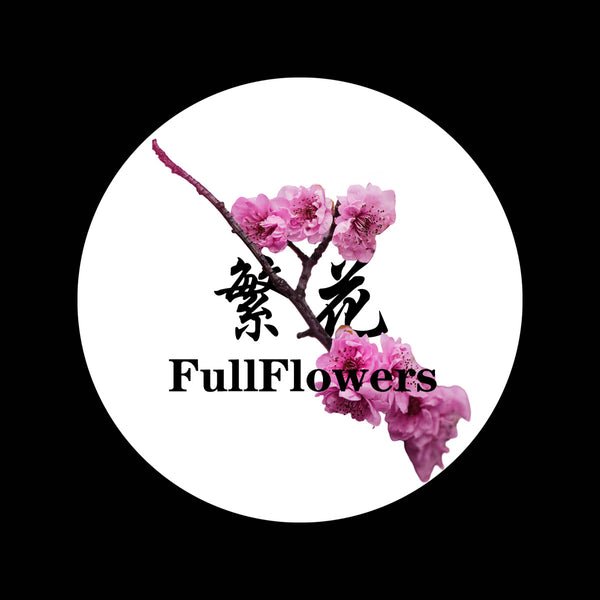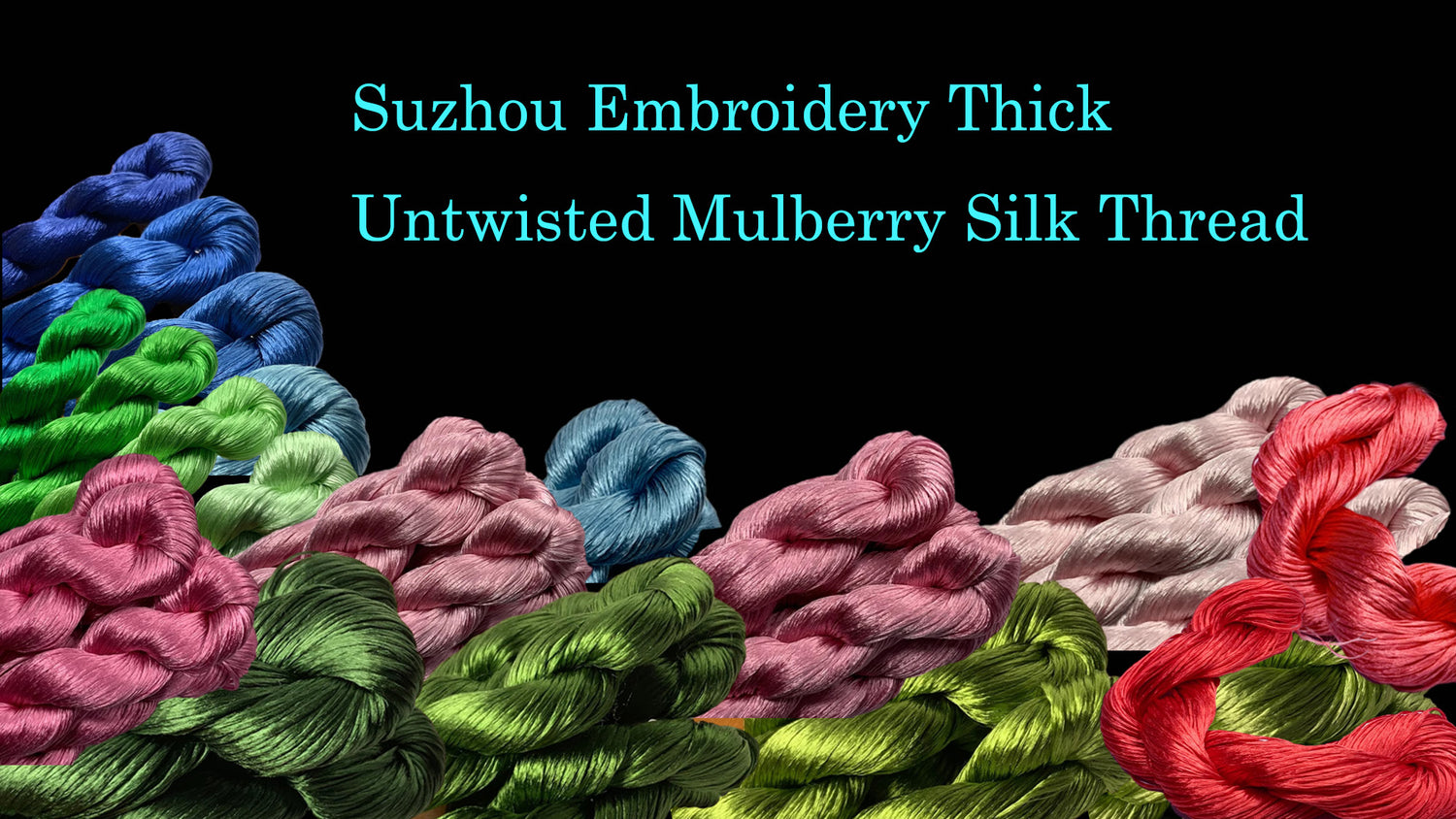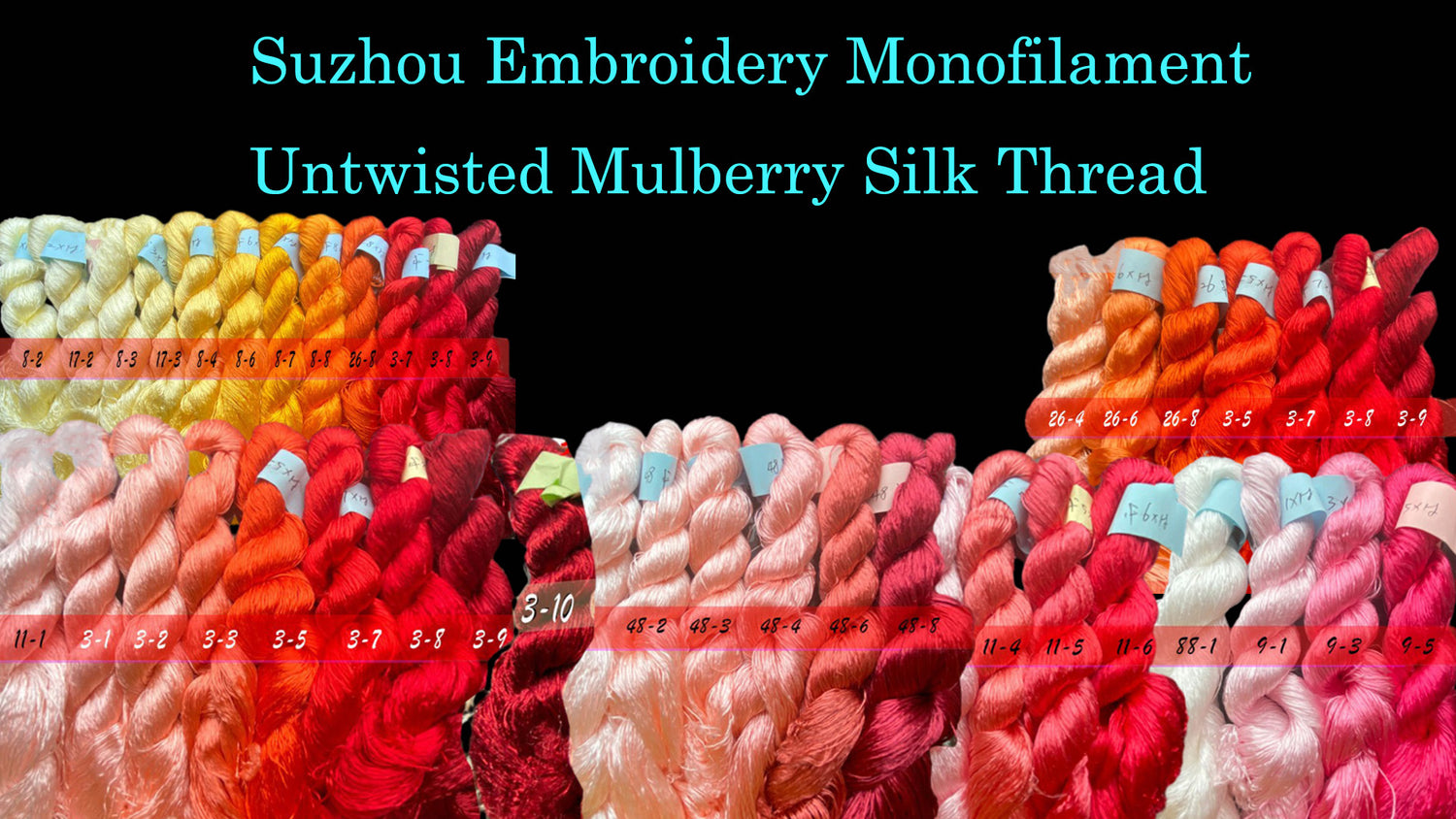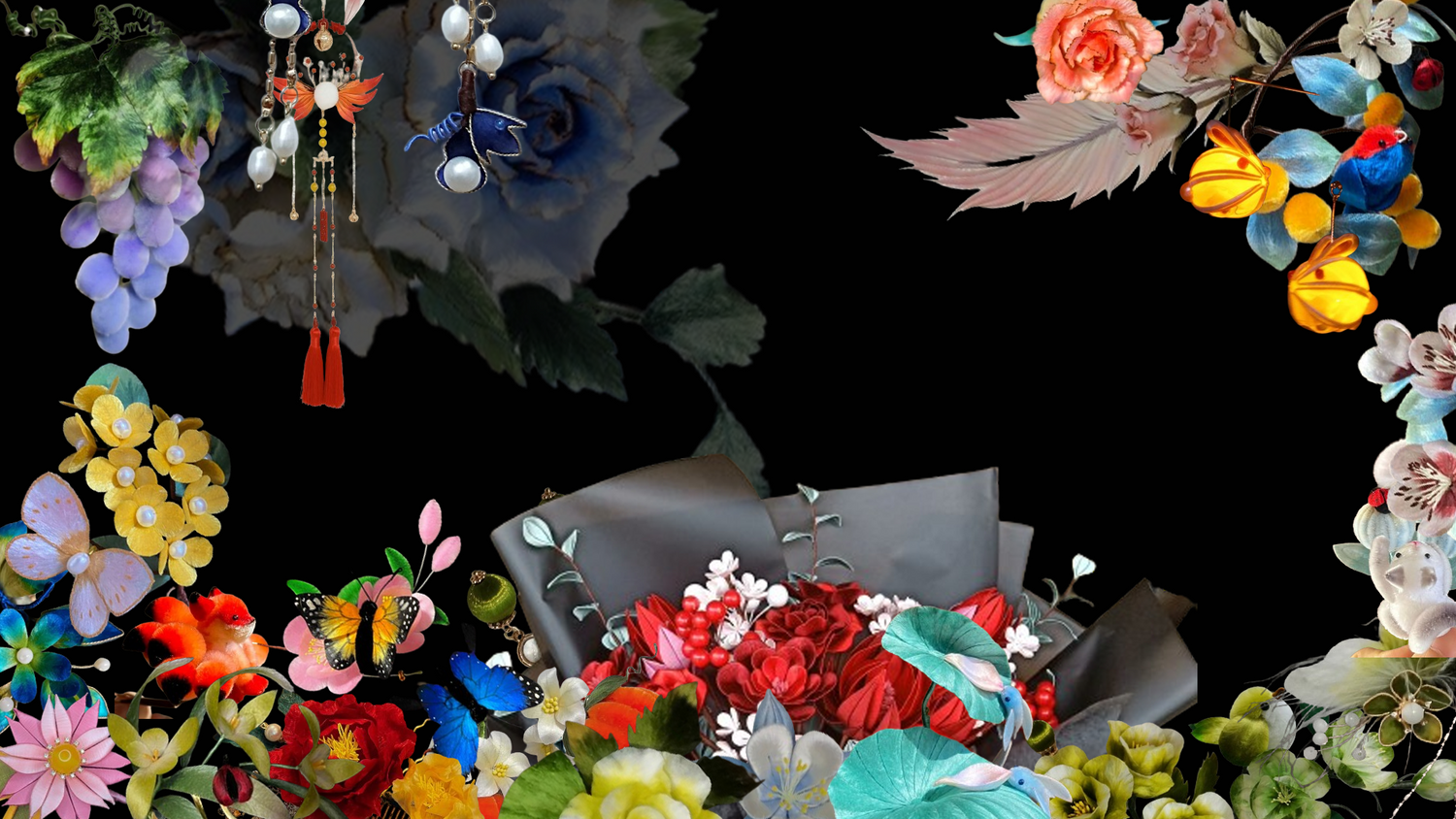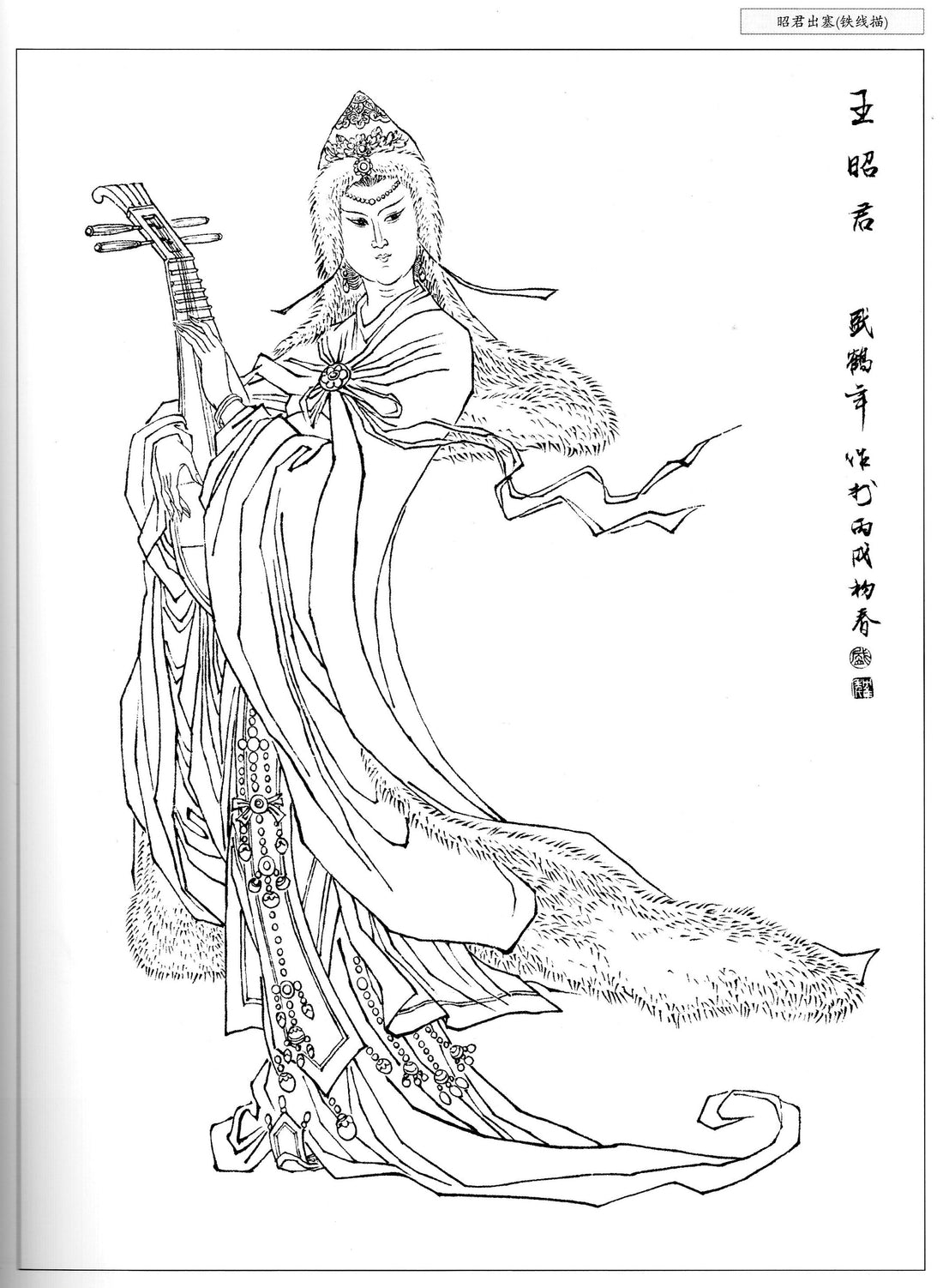
18 Traditional Chinese Line Drawing Techniques - 18 Miao(01--09)
Share
18 Miao is a traditional Chinese line drawing technique, referring to various methods of depicting the folds in ancient clothing. In the Ming Dynasty, Zou Dezhong's "Painting Manual" recorded "eighteen different drawing methods from ancient to modern times." These methods include the High Antiquity Silk Line Drawing, Zither String Drawing, Iron Line Drawing, among others, totaling eighteen kinds. These methods summarize the various styles of clothing folds depicted in different schools of figure painting throughout history and are named based on the shape of the brush strokes. Naturally, the modern depiction of clothing folds has evolved, and with the difference in contemporary fabrics from ancient ones, this is not discussed here. Chinese painting's plain line drawing can be divided into three categories: thicker lines called Zither String, thinner lines called Iron Line, and extremely thin lines called Silk Line. Regardless of the type of line drawing used, the emphasis is on "writing," ensuring that each line has the charm of calligraphy.
1. Flowing Clouds and Flowing Water Drawing(行云流水描)
 Its appearance is like clouds stretching and rolling, white and resembling water, turning smoothly without stagnation, continuously and unbroken. Because the lines are long and unbroken, the brushwork needs to be long and continuous, avoiding broken or stagnant lines. Pay attention to the smooth and flowing characteristics of the lines, and practice the lines thoroughly before drawing the final draft to achieve proficiency and ease.
Its appearance is like clouds stretching and rolling, white and resembling water, turning smoothly without stagnation, continuously and unbroken. Because the lines are long and unbroken, the brushwork needs to be long and continuous, avoiding broken or stagnant lines. Pay attention to the smooth and flowing characteristics of the lines, and practice the lines thoroughly before drawing the final draft to achieve proficiency and ease.
 Guanyin (Flowing Clouds and Flowing Water Drawing)
Guanyin (Flowing Clouds and Flowing Water Drawing)
For example, the image of Guanyin standing upright, with kind eyebrows and eyes, a gentle and serene expression, calm and compassionate, and beautifully charming. The wind belt on the body moves with the wind, like flowing clouds and water, delicate and graceful, full of movement. Due to the interweaving of long sleeves, clothing belts, and wind belts on the body, it is important to understand the origin and development of the folds without making them chaotic. The composition is balanced, the picture is fresh and beautiful, and the details are vivid and lively.
2. Nail Head and Rat Tail Drawing(钉头鼠尾描)
 The brushwork is firm, borrowing the method of orchid leaves. The starting point is pressed down to create a point like a nail head, and the ending point gradually thins, resembling a rat tail, hence the name. The key to this method is the characteristic of the nail head at the start and the rat tail at the end, with vigorous and powerful brushwork.
The brushwork is firm, borrowing the method of orchid leaves. The starting point is pressed down to create a point like a nail head, and the ending point gradually thins, resembling a rat tail, hence the name. The key to this method is the characteristic of the nail head at the start and the rat tail at the end, with vigorous and powerful brushwork.
 Yue Fei (Nail Head and Rat Tail Drawing)
Yue Fei (Nail Head and Rat Tail Drawing)
Yue Fei is a Chinese national hero. The angle chosen in this image is from a low perspective, highlighting the hero's tall and mighty, overwhelming heroic spirit.
When drawing the head, it is generally easier to grasp the picture by first drawing the face and then the helmet. First draw the outline of the figure and clothing accessories, and finally depict the intricate patterns. The composition extends the figure to the right, full of tension.
3. High Antiquity Silk Line Drawing(高古游丝描)
 It mainly involves smooth movement, with uniform thickness, like "spring silkworms spinning silk," continuously winding without angular lines or sudden changes in thickness, subtle and elusive, giving a sense of stillness yet movement in a calm and serene association. Due to the extremely fine lines, the brush tip should be rounded and delicate when using a fine brush. Eastern Jin painter Gu Kaizhi often used this method. When moving the brush, use the tip evenly to achieve thin yet strong lines. The fine and powerful brushwork is generally suitable for depicting flying clothing folds.
It mainly involves smooth movement, with uniform thickness, like "spring silkworms spinning silk," continuously winding without angular lines or sudden changes in thickness, subtle and elusive, giving a sense of stillness yet movement in a calm and serene association. Due to the extremely fine lines, the brush tip should be rounded and delicate when using a fine brush. Eastern Jin painter Gu Kaizhi often used this method. When moving the brush, use the tip evenly to achieve thin yet strong lines. The fine and powerful brushwork is generally suitable for depicting flying clothing folds.
 Daiyu Burying Flowers (High Antiquity Silk Line Drawing)
Daiyu Burying Flowers (High Antiquity Silk Line Drawing)
For instance, Lin Daiyu in the image is a character from the story of "Dream of the Red Chamber." This image takes the frontal view of the character, with short and simple sleeves, characteristic of Ming Dynasty clothing. The High Antiquity Silk Line Drawing used is extremely fine and uniform.
First draw the rough sketch, then cover it with mature rice paper. When redrawing, start with the face and hands, paying special attention to the smooth and delicate lines of the fingers, achieving a beautiful and touching effect that enhances the picture.
4. Iron Line Drawing(铁线描)
 Iron Line Drawing is characterized by straight and firm strokes, giving a heavy feel to the clothing folds. Using the center of the brush, the strokes are heavy, round, and powerful, without any weakness. Compared to Zither String Drawing, it is slightly thicker. It is suitable for depicting more solemn subjects. Its feature is roughly uniform thickness, like iron wire, strong and powerful.
Iron Line Drawing is characterized by straight and firm strokes, giving a heavy feel to the clothing folds. Using the center of the brush, the strokes are heavy, round, and powerful, without any weakness. Compared to Zither String Drawing, it is slightly thicker. It is suitable for depicting more solemn subjects. Its feature is roughly uniform thickness, like iron wire, strong and powerful.
 Zhaojun Departs the Frontier (Iron Line Drawing)
Zhaojun Departs the Frontier (Iron Line Drawing)
The protagonist in the image is dressed in winter clothes, reflecting the cold climate outside the fortress, holding a pipa tightly, expressing the protagonist's longing for home.
The curves in the work reflect the elegance and grace of the character. The line and the character's expression and posture are unified, making the picture look solemn and elegant. First make a rough sketch. When redrawing on mature rice paper, start with the face and hands. Pay attention to the smooth and delicate lines of the face and hands. Then draw the clothes and accessories, emphasizing the characteristics of Iron Line Drawing as much as possible.
5. Willow Leaf Drawing(柳叶描)
 Willow Leaf Drawing, as the name suggests, its lines resemble willow leaves blowing in the wind. Due to the similarity to willow leaves in the wind, it avoids floating and thinness. Wu Daozi often used this method. Its characteristics are vigorous and thick brushwork, floating clothing folds, very dynamic. First make a rough sketch, then cover it with mature rice paper. When redrawing, start with the head and hands, then draw the clothing folds and accessories. While redrawing, focus and complete it in one go, highlighting the distinctive features of Willow Leaf Drawing.
Willow Leaf Drawing, as the name suggests, its lines resemble willow leaves blowing in the wind. Due to the similarity to willow leaves in the wind, it avoids floating and thinness. Wu Daozi often used this method. Its characteristics are vigorous and thick brushwork, floating clothing folds, very dynamic. First make a rough sketch, then cover it with mature rice paper. When redrawing, start with the head and hands, then draw the clothing folds and accessories. While redrawing, focus and complete it in one go, highlighting the distinctive features of Willow Leaf Drawing.
 Xishi Washing Silk (Willow Leaf Drawing)
Xishi Washing Silk (Willow Leaf Drawing)
For instance, in the image "Xishi Washing Silk," the turning posture of the figure forms an "S" shape composition, with the clothing belts blowing in the wind, carrying a bamboo basket, simple attire, vividly depicting the innocent and lively village girl.
6. Bamboo Leaf Drawing(竹叶描)
 As the name suggests, its line drawing resembles bamboo leaves. It is generally outlined with the center of the brush, with pressure applied to the middle of the line, making it soft yet not weak. In specific use, short strokes can borrow from bamboo leaves, reed leaves drawing, and long strokes can resemble willow leaf drawing but more rigid and with more variation, similar to the varied force in calligraphy.
As the name suggests, its line drawing resembles bamboo leaves. It is generally outlined with the center of the brush, with pressure applied to the middle of the line, making it soft yet not weak. In specific use, short strokes can borrow from bamboo leaves, reed leaves drawing, and long strokes can resemble willow leaf drawing but more rigid and with more variation, similar to the varied force in calligraphy.
 Sun Wukong (Bamboo Leaf Drawing)
Sun Wukong (Bamboo Leaf Drawing)
This drawing method is mainly suitable for depicting tighter fitting short clothes and pants in figure painting. In the image, Sun Wukong's agile and lively character is humorously handled, perfectly suited to this drawing method.
7. Stubby Brush Drawing(撅头丁描)
 Also known as Stubby Drawing. Stubby, also referred to as stub, uses a blunt brush, commonly known as blunt brush line drawing. Ma Yuan and Xia Gui used this method. The line characteristics are strong and upright but avoid roughness. Using a blunt brush easily expresses strong and upright meaning but should not be rough, maintaining strength with softness, and a sense of elegance.
Also known as Stubby Drawing. Stubby, also referred to as stub, uses a blunt brush, commonly known as blunt brush line drawing. Ma Yuan and Xia Gui used this method. The line characteristics are strong and upright but avoid roughness. Using a blunt brush easily expresses strong and upright meaning but should not be rough, maintaining strength with softness, and a sense of elegance.
 Li Shizhen (Stubby Brush Drawing)
Li Shizhen (Stubby Brush Drawing)
For example, in the image, the rich grass and farm tools show Li Shizhen's fearless character. The lines are dense and moderate, the theme is clear, and the picture is full and tense.
8. Tremulous Water Lines Drawing(战笔水纹描)
 It is a coarse reductive brushstroke, though tremulous, the brush should stay and not slip, stop and not stagnate, giving a flowing water-like feel. The lines have a strong rhythm, staying but not slipping.
It is a coarse reductive brushstroke, though tremulous, the brush should stay and not slip, stop and not stagnate, giving a flowing water-like feel. The lines have a strong rhythm, staying but not slipping.
 Jiang Ziya (Tremulous Water Lines Drawing)
Jiang Ziya (Tremulous Water Lines Drawing)
This method is most fully and appropriately used in the hair and cloak of Jiang Ziya, cleverly expressing the character's resolute and wise personality through the brush.
9. Zither String Drawing(琴弦描)
 As the name suggests, its brushwork is steady and firm, with smooth and sharp lines, having a sense of tension. Pay attention to using the center of the brush and suspended wrist, with steady brushwork, coordinating mind and hand without disorder. The lines are slightly thicker than the High Antiquity Silk Line Drawing. The brushwork emphasizes full spirit, concentrating, and achieving each stroke precisely. When drawing the final draft, start with the face and hands, then the clothes, and finally add the patterns and accessories on the clothes.
As the name suggests, its brushwork is steady and firm, with smooth and sharp lines, having a sense of tension. Pay attention to using the center of the brush and suspended wrist, with steady brushwork, coordinating mind and hand without disorder. The lines are slightly thicker than the High Antiquity Silk Line Drawing. The brushwork emphasizes full spirit, concentrating, and achieving each stroke precisely. When drawing the final draft, start with the face and hands, then the clothes, and finally add the patterns and accessories on the clothes.
 Diao Chan Worships the Moon (Zither String Drawing)
Diao Chan Worships the Moon (Zither String Drawing)
For instance, the protagonist in the image is dressed in full attire, reflecting her status as a court official's daughter. When depicting the character's expression, strive for a frozen expression and noble temperament.
The work chooses the character's full profile, well displaying the graceful posture. When drawing the profile face, the lines' undulation should be beautiful, completed in one go. Since the character's movement is towards the left, the signature is placed on the right to balance the left and right.
